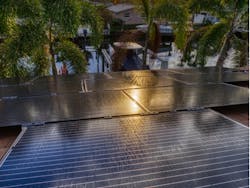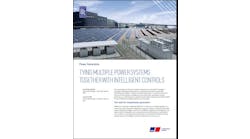Florida is the most hurricane-prone state in the US, vulnerable to an average $15.4 billion in storm damages annually. So it’s perplexing that state government hasn’t made at least as much fanfare about microgrids as places like California and New Jersey.
But even if its government isn’t leading the way, microgrids are cropping up in the state.
It’s generally more difficult for private developers to build sophisticated microgrids in states like Florida that did not undergo industry restructuring. Utilities in these states have more monopoly sway. So, not surprisingly, those microgrids that are built, often are done so in a partnership with vertically integrated utilities.
In Florida, both Florida Power & Light (FPL) and Tampa Electric are partnering on microgrid projects.
FPL, which describes itself as the largest energy company in the US as measured by retail electricity produced and sold, was featured in not one, but two microgrid announcements this week. We wrote about the first one in a story here, which describes a microgrid control lab at the University of Central Florida that the utility is helping to bring about.
Air Force microgrid
The utility’s second piece of news came from the US Air Force which together with Gulf Light Power, a utility recently acquired by FPL, signed an “energy assurance lease” for a solar microgrid at Tyndall Air Force Base, 12 miles east of Panama City.
The 10-year agreement is a pilot program for Gulf to demonstrate microgrid capabilities. The utility will own, operate and maintain the microgrid. Like many energy-as-a-service style contracts, it removes risk and cost from the host, in this case the Air Force.
The microgrid will include a 150-kW photovoltaic solar array and a 450-kW, 2.5-hour battery energy storage system.
Like most microgrids, the system won’t just run during power outages. Under normal conditions it will serve the larger grid. More specifically, power from the microgrid will provide power for the utility’s regular retail customers, including Tyndall AFB. During grid outages, the microgrid will island from the grid and the Air Force will have first right of refusal to use its power to keep three of its mission-critical facilities up and running.
“The Tyndall Microgrid is a fantastic example of a win-win project that the Air Force looks to develop with industry,” said Kirk Phillips, DAF Office of Energy Assurance director at the Air Force Civil Engineer Center (AFCEC). “Tyndall AFB gets enhanced electrical resilience through on-site generation as the primary benefit and renewables as an enhanced benefit, and Gulf Power gets strategically sited rate-based generation.”
The microgrid will be located on two acres of land made available through an Air Force lease program, which offers long-term agreements between the Air Force and public or private developers to lease underused Air Force property in exchange for cash rent or in-kind consideration.
Julia Cantrell, chief of AFCEC’s Real Estate Development Enhanced Use Lease Execution Branch, said the project is likely the first of many to come through the program given a renewed focus on energy resilience for Air Force missions.
Other Florida utility microgrids
FPL, which serves 5.6 million customers, also partnered on a third microgrid announced in October, that one with Florida International University (FIU). The microgrid will supply FIU’s engineering center with a 1.4-MW solar array and a 3-MW/9-MWh battery system.
Tampa Electric (TECO), a utility that serves 792,500 customers in West Central Florida, won regulatory approval in June to build a neighborhood microgrid with Emera Technologies for 37 homes in the Medley at Southshore Bay housing development in Hillsborough County.
TECO has also partnered with PowerSecure, which has developed several microgrids in Florida, on a project to serve a ministry organization in Tampa. The microgrid is designed to allow the organization to continue to serve food to the community, even through severe storms.
FPL rate agreement brings solar, EVs
Hurricanes are likely to continue to drive microgrid development in the state, but not as the lone force. The sunny state makes a good home for solar energy and as more is added, microgrids are likely to be built to balance the intermittent availability of solar. Electric vehicles (EVs) also are coming to the state — another technology expected to increase demand for microgrids.
The prospects for solar and EVs in Florida got a boost from a rate settlement agreement approved by the state Public Service Commission in October. The order calls for FPL to install 3,576 MW of solar by 2025. The solar can be paired with batteries if the cost remains below a $1,250 per kW cap.
Under the terms of the agreement, FPL also will expand EV infrastructure throughout its territory. Through a $30 million pilot project the utility will gather data in preparation for mass EV adoption. With another $100 million from the agreement, FPL will expand access to public fast charging, including for underserved areas and evacuation routes. The commission also approved $75 million for various EV programs designed for commercial and residential customers and to study technologies and educate customers.
Track news about microgrids. Subscribe to the free Microgrid Knowledge Newsletter.







